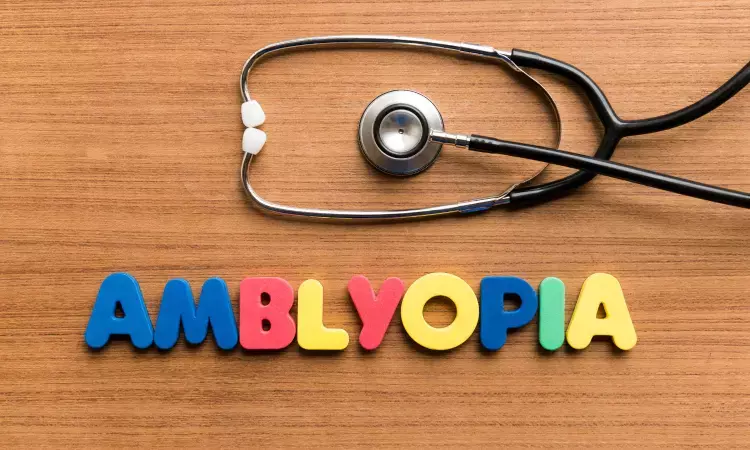- Home
- Medical news & Guidelines
- Anesthesiology
- Cardiology and CTVS
- Critical Care
- Dentistry
- Dermatology
- Diabetes and Endocrinology
- ENT
- Gastroenterology
- Medicine
- Nephrology
- Neurology
- Obstretics-Gynaecology
- Oncology
- Ophthalmology
- Orthopaedics
- Pediatrics-Neonatology
- Psychiatry
- Pulmonology
- Radiology
- Surgery
- Urology
- Laboratory Medicine
- Diet
- Nursing
- Paramedical
- Physiotherapy
- Health news
- Fact Check
- Bone Health Fact Check
- Brain Health Fact Check
- Cancer Related Fact Check
- Child Care Fact Check
- Dental and oral health fact check
- Diabetes and metabolic health fact check
- Diet and Nutrition Fact Check
- Eye and ENT Care Fact Check
- Fitness fact check
- Gut health fact check
- Heart health fact check
- Kidney health fact check
- Medical education fact check
- Men's health fact check
- Respiratory fact check
- Skin and hair care fact check
- Vaccine and Immunization fact check
- Women's health fact check
- AYUSH
- State News
- Andaman and Nicobar Islands
- Andhra Pradesh
- Arunachal Pradesh
- Assam
- Bihar
- Chandigarh
- Chattisgarh
- Dadra and Nagar Haveli
- Daman and Diu
- Delhi
- Goa
- Gujarat
- Haryana
- Himachal Pradesh
- Jammu & Kashmir
- Jharkhand
- Karnataka
- Kerala
- Ladakh
- Lakshadweep
- Madhya Pradesh
- Maharashtra
- Manipur
- Meghalaya
- Mizoram
- Nagaland
- Odisha
- Puducherry
- Punjab
- Rajasthan
- Sikkim
- Tamil Nadu
- Telangana
- Tripura
- Uttar Pradesh
- Uttrakhand
- West Bengal
- Medical Education
- Industry
Amblyopia may have protective effect against Age-related macular degeneration

Age-related macular degeneration (AMD) is a leading cause of visual impairment with 200 million patients affected globally. Amblyopia is a neurodevelopmental abnormality that leads to reduced vision usually in one eye. It is clinically defined as a difference between eyes in best-corrected visual acuity of two lines or more. The prevalence of amblyopia varies widely among regions and periods.
Researchers aimed to evaluate whether patients with AMD and co-occurrent amblyopia are more likely to have both diseases diagnosed on the ipsilateral or on the contralateral side in a large Austrian database.
A review in The American Journal Of Opthalmology reveals that database of patients with age-related macular degeneration (AMD) and amblyopia showed that, among patients with asymmetrical AMD and amblyopia, there was a greater likelihood of AMD to be more advanced in the non-amblyopic eye. The possible protective effect of amblyopia on the development of AMD warrants further investigation.
Researchers evaluated medical records of all patients who visited the Department of Ophthalmology of the Medical University Graz between December 1996 and June 2021 were searched for the co-occurrence of AMD and amblyopia. Patients with AMD diagnosed on one eye side were used for further analysis. Spectral-domain optical coherence tomography (SD-OCT) images were analyzed to confirm the lateral asymmetry of AMD.
The key findings of the study are
• A total of 327 443 patients were screened for the co-occurrence of AMD and amblyopia.
• 8742 patients had AMD diagnosed on one eye side and 5 051 patients had unilateral amblyopia.
• 163 patients were found to have AMD diagnosed on one side and unilateral amblyopia in combination.
• Out of these, 126 patients had AMD and amblyopia on contralateral sides and 37 had AMD and amblyopia on the ipsilateral side (p<0.001).
Researchers concluded that “Less amblyopic patients had AMD diagnosed on the amblyopic eye compared to the non-amblyopic eye. In cases of lateral asymmetry, the non-amblyopic eye is more likely to have the more advanced form of AMD.”
Reference: Manuel Großpoetzl, LorenzKloeckl, AndreasGuttmann, MichaelKruger, JakobGran, LukasHoeflechner, MartinaBrandner, HeikeGaugl, DomagojIvastinovic, MarleneLindner, ReginaRiedl, AndreasWedrich, EwaldLindner; Protective Effect of Amblyopia on Age Related Macular Degeneration, American Journal of Ophthalmology (2023), doi: https://doi.org/10.1016/j.ajo.2023.07.006.
MSc. Neuroscience
Niveditha Subramani a MSc. Neuroscience (Faculty of Medicine) graduate from University of Madras, Chennai. Ambitious in Neuro research having worked in motor diseases and neuron apoptosis is interested in more of new upcoming research and their advancement in field of medicine. She has an engrossed skill towards writing and her roles at Medical dialogue include Sr. Content writer. Her news covers new discoveries and updates in field of medicine. She can be reached at editorial@medicaldialogues.in
Dr Kamal Kant Kohli-MBBS, DTCD- a chest specialist with more than 30 years of practice and a flair for writing clinical articles, Dr Kamal Kant Kohli joined Medical Dialogues as a Chief Editor of Medical News. Besides writing articles, as an editor, he proofreads and verifies all the medical content published on Medical Dialogues including those coming from journals, studies,medical conferences,guidelines etc. Email: drkohli@medicaldialogues.in. Contact no. 011-43720751


